How to find out if you can put a modular home on your block of land
You’re thinking of building your new home as an offsite built modular home, but are wondering if site access will be a problem. Fair enough – site access for modular homes is particularly important, not only for access for the modular home but access for trucks and materials in any method of construction.
In this article we go over some of the main points you will need to look at when considering whether to your site is suitable for a modular build. And yes – it does sound complicated. The good news is that there are actually very few sites that we aren’t able to get a modular home onto.
So, read on to check out the main points to consider for modular site access…
HOW DO WE MOVE OUR HOMES?
Ok – so first things first. Before we go into great detail in regard to the finer points of access and transport regulations you need to understand HOW we move our off-site prefabricated homes.
Each modular building company differs in some way as to the methods and procedures in transport. So, in a nutshell, the two main methods Westbuilt Homes uses to transport and place our homes onsite are:
1. TRACTOR PUSH
This modular home installation method is the most cost effective & easy. The transport company has a custom-made low-loader trailer with a folding goose-neck. The home is fitted with an axle assembly and drawbar. A 4WD tractor hooks onto the drawbar and maneuvers each module on and off the trailer as well as positions it on site over the piers.
The real beauty of this modular transport system is when we have to access sites off-road. Once the module is unloaded it is able to negotiate some really tight situations!
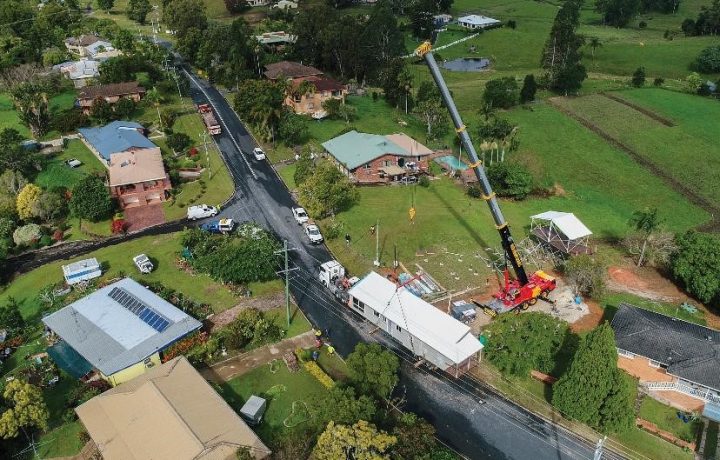
2. CRANE LIFT
While the tractor push method for modular home installation is very versatile it does have its limitations. These are on sloping and small sites. For these sites, we have to crane each home module straight off the truck and onto the foundations of the modular home.
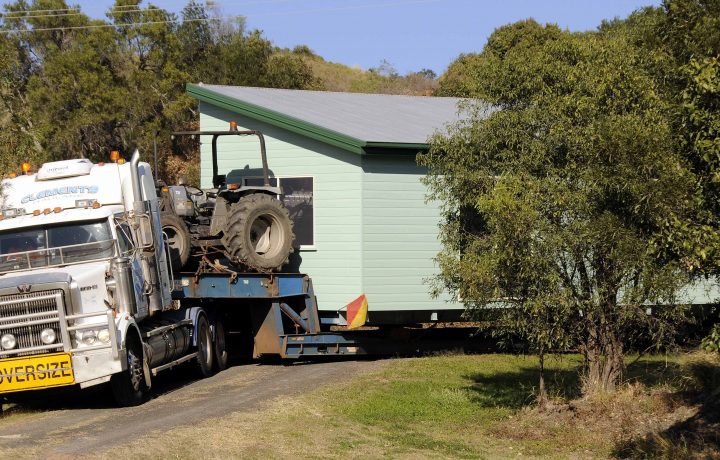
WHAT ARE THE 3 MAIN ISSUES TO LOOK OUT FOR WITH MODULAR HOME SITE ACCESS?
Now we have an understanding of how Westbuilt modular homes are transported. Once you have a grasp of the concept it does really open out the possible solutions and also highlight the issues.
It’s important to know that, while there are constraints, they are by no means insurmountable. Generally speaking, the more constraints we need to overcome, the greater the cost.
We find that you can generally break site access issues down to the following 3 categories.
STEEP ACCESS ROADS
PROBLEM
So, the first one is steep access roads and tight corners. Roads like the Bunya Mountain access road, Mt Tambourine and the Eungella range crossing near Mackay are examples of roads that limit modular building options.
SOLUTION
How we overcome this on these roads is by ensuring that we minimise the module size. Ideal module sizes for these sorts of roads are around 12-14m in length and no more than 4.0m wide. This ensures that the truck won’t lose traction due to weight and is far more maneuverable for tight corners.
NARROW BRIDGES
PROBLEM
Now for narrow bridges and weight restrictions. Check the access road as most bridges and are signed with weight and height restrictions. If a bridge is narrower than 4.5m it needs to be checked to ensure there is a solution.
Also, while it is not a frequent problem, bridges which have a load limit of less than 20t are impassable for most semi-trailers, let alone modular homes.
SOLUTION
So, how to overcome narrow bridges when transporting modular homes? It does depend on each case, but some bridges do have removable handrails or low guardrails which are is an easy fix.
If this is not the case, we need to ensure the module size is smaller than the bridge width. This will mean you have more loads to transport but due to the narrow width, there will be savings per load we can realise.
HEIGHT RESTRICTIONS
For the final issue, we need to look at out height restrictions. There is no actual restriction on height – it is really governed by your budget! In saying that, we find that if you can keep your building height under 5.0m this is the most cost-effective way to transport – more on that below.
PROBLEMS TO LOOK OUT FOR
So, check out for low bridges and overpasses. If they are below 5.0m they may present a challenge. Another one we look at is low hanging branches and trees.
SOLUTIONS
If there are low bridges or over-passes we do need to think about alternative routes. If there aren’t any viable alternative routes we will either have to design the home to keep under the required height – the new Nordic style is good for this!
WHAT ARE THE REGULATIONS?
Transport regulations really do differ from state to state. In the states we work in, QLD & NSW, there are few differences. Check out the following website for more details on transport regulations.
QLD Department of Main Road Excess Mass & Dimension information page
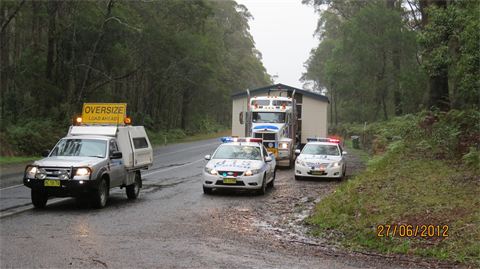
ESCORTS & POLICE
Ok – so escorts and police. When are they required, how many and how often? Check out the table below which describes how we work out how many or when police and escorts are required. This is an excerpt from the “Guideline for Excess Dimension” from the QLD TMR
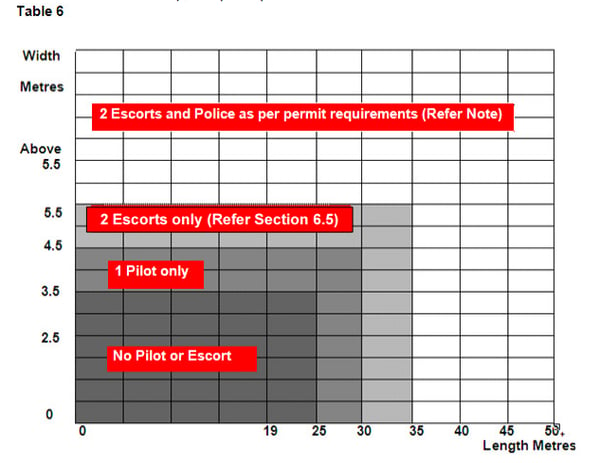
NSW regulations are more or less similar except they do have length restrictions as well. Check out the following Notice from the NSW TMS.
TRAFFIC CONTROL
Another regulation which can add cost to the home is traffic control requirements. This, normally speaking, comes into effect if to transport or unload the home, at least part of the road will be closed for a period of time. This means that a traffic management plan will be created and priced to ensure motorist and pedestrians are kept safe. Also, we need to ensure that on busier roads traffic flow is not disturbed too much.
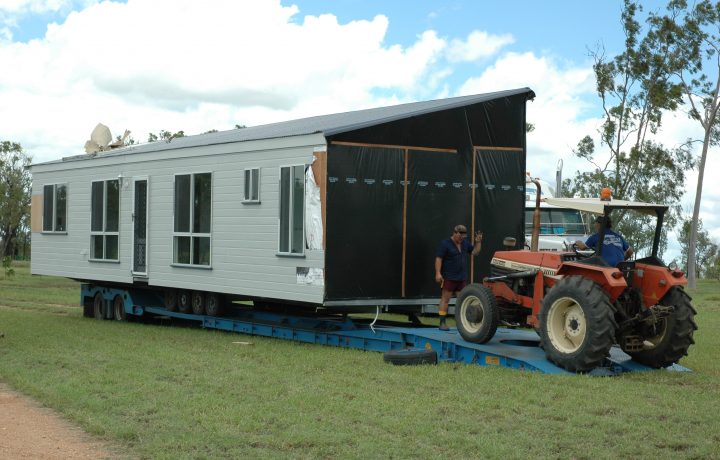
THE IDEAL MODULE OR SECTION SIZES FOR MODULAR HOMES IN QLD & NSW
So what is the most cost-effective module size to use? If you’re looking to custom design your new home, it can be really helpful to understand what the ideal module or section size is. Check out the guide below to help understand the benefits of different module sizes.
MODULE WIDTH
3.0m & under module width – No Escorts. The cheapest to transport but requires more loads.
3.0m to 4.0m module width – 1 Escort in most cases. This is the most cost-effective module width.
Over 4.0m module width – the least cost-effective width. Can increase the cost of the home significantly.
MODULE LENGTH
The max module length for a Westbuilt Homes module is 18.0m. in saying that in NSW we find a max module length of 16.5m is more cost effective as there are additional transport requirements for home sections longer than 16.5m.
CONCLUSION
So – fear not! We do realise that there is an awful lot of jargon and technical stuff we’ve just gone over! And the team here at Westbuilt do NOT expect our clients to know every last thing about transport regulations, load limits and module sizes! After all – what would be the use of us if we couldn’t solve our client’s problems for them?!
Interested in building a modular home?
If you think that building a new modular home might be the best option for you, and you’re interested in a more streamlined construction process, talk to the team at Westbuilt Homes.
We have been designing and building stunning modular homes since 1993. The construction process of a modular home is very different to that of a conventional home, giving you greater control over the construction time, the quality and the timeframe.
To learn more about modular construction, book a no obligation consultation with one of our modular experts. We’d be happy to answer any questions you may have.



